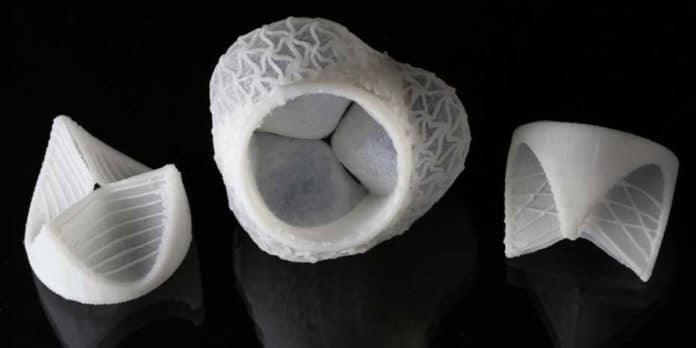Aortic heart valve replacements are progressively requested in our society as the average age of the populace keeps on rising. An expected 850,000 patients will need experience heart valve replacements in 2050.
Heart valves customized to fit the anatomy of the patient, match the softness of surrounding tissue, and adapt to the pathology and growth of diseased host tissue speak to the next frontier in treatment.
Scientists at the ETH Zurich in collaboration with the South African company SAT taking a gander for an alternative to the replacement heart valves currently in use.
Interestingly, they have devised a 3D printed artificial heart valve using silicone. The 3D printed artificial heart valve is patient-specific, bioinspired designs, useful for in vitro disease modeling and physical simulators.
The technology is can potentially be tailored more precisely to the patient, as scientists primarily determined the individual shape and size of the leaky heart valve using computer tomography or magnetic resonance imaging. For this, scientists used images to create a digital model and a computer simulation to calculate in advance the forces acting on the implant and its potential deformation. The material used is also compatible with the human body, while the blood flow through the artificial heart valve is as good as with conventional replacement valves.
Using a 3D printer, scientists can create this new type of silicon valve within just half an hour. What scientists have to do is, creating a negative impression of the valve. They then have to spray silicon ink onto his impression in the shape of a three-pointed crown, which forms the valve’s thin flaps.
In the next step, an extrusion printer deposits robust silicone paste to print specific patterns of thin threads on their surface. These correspond to collagen fibers that pass through natural heart valves. The silicone threads reinforce the valve flap and extend the life of the replacement valve. The root of the blood vessel connected to the heart valve is printed using the same procedure and at the end is covered with a net-shaped stent, which is needed for connecting the silicone valve replacement to the patient’s cardiovascular system.
During testing, the valve shows promising results for its functionality. Scientists are further planning to extend the life of these replacement valves to 10-15 years.
Manuel Schaffner, one of the study’s lead authors and former doctoral student of André Studart, Professor for Complex Materials at ETH said, “It would be marvelous if we could one day produce heart valves that last an entire lifetime and possibly even grow along with the patient, so that they could also be implanted in young people as well.”
Fergal Coulter, a lead author of the study, is currently working on the further development of the silicone heart valve. He said, “These experiments are needed to make sure that the technology has any chance at all of being used in human patients.”
The scientists have reported on their work in an article in the latest issue of the scientific journal “Matter”.
